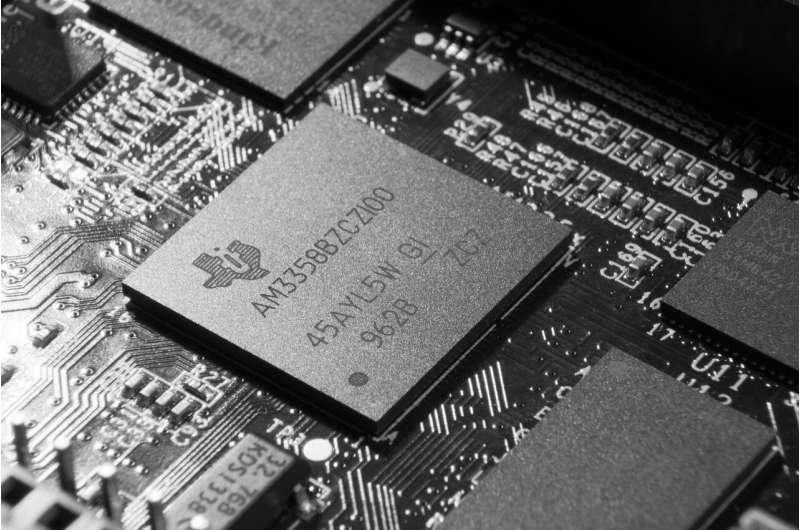This article has been reviewed according to Science X's editorial process and policies. Editors have highlighted the following attributes while ensuring the content's credibility:
fact-checked
reputable news agency
proofread
Texas Instruments to build new $11 billion semiconductor plant in Utah

Texas Instruments will build a new $11 billion 300-millimeter semiconductor wafer fabrication plant in Lehi, Utah.
The new plant will be next to the company's existing 300-mm semiconductor wafer fab in Lehi, which Texas Instruments acquired for $900 million in 2021 from Micron Technology. The two plants will operate together as a single plant. Construction is to begin later this year, with production planned as early as 2026.
It's part of TI's long-term 300-mm manufacturing roadmap, said Haviv Ilan, TI's executive vice president and chief operating officer who becomes the company's new president and CEO on April 1.
The first Lehi plant began producing analog and embedded chips in December. TI produces billions of analog and embedded processing chips annually for some 80,000 products. Because of the breadth of TI's portfolio, its performance is closely watched on Wall Street.
"Our decision to build a second fab in Lehi underscores our commitment to Utah and is a testament to the talented team there who will lay the groundwork for another important chapter in TI's future," Ilan said in a statement. "With the anticipated growth of semiconductors in electronics, particularly in industrial and automotive, and the passage of the CHIPS and Science Act, there is no better time to further invest in our internal manufacturing capacity."
TI's wafer fabrication plants produce semiconductor chips in a sterile environment, where a 400-step process takes place to turn 300-millimeter wafers into some of the world's most essential technology. Cars, calculators and industrial machinery all use TI chips.
The company said the Lehi expansion is the largest economic investment in Utah's history, creating an additional 800 TI jobs and thousands of indirect jobs. TI has about 1,100 employees at its existing fab in Lehi.
"Companies like Texas Instruments continue to invest in Utah because of our world-class business climate and exceptional workforce," said Utah Gov. Spencer Cox. "TI's new semiconductor fab will solidify Utah as a global semiconductor manufacturing hub for generations to come."
The cost of the new fab is built into TI's previously announced capital spending plan to expand manufacturing capacity. In 2021, TI's analog division generated over $14 billion in revenue. Embedded processors accounted for over $3 billion of the company's $18.3 billion in total revenue.
TI recently began production at a new fab plant in Richardson, which is 30% larger than the company's original fab and took two years to complete.
"Like Richardson, this will be a 300-mm semiconductor wafer fab that will produce tens of millions of analog and embedded processing chips every day, which will be used in electronics everywhere," said Ellen Fishpaw, director of corporate media relations an issues communications at TI. "We are in early stages of planning the exact site layout for our second Lehi fab, but there will certainly be differences in terms of size and layout."
It has also started work on four new 300-mm wafer fabs in Sherman. By 2025, the first fabrication facility in the planned $30 billion investment could be producing chips as well.
2023 The Dallas Morning News.
Distributed by Tribune Content Agency, LLC.
















